In northwestern Hunan lies a city shrouded in mist and elevated by jagged peaks—a three-dimensional landscape painting and a flowing Tujia ballad. This is Zhangjiajie, where the floating “Hallelujah Mountains” in James Cameron’s Avatar found their inspiration, and where global travelers marvel at a fantastical world that “seems to belong only to the heavens.” Today, let us pierce through the clouds to unveil the mystery of this “enlarged bonsai and miniature fairyland.”
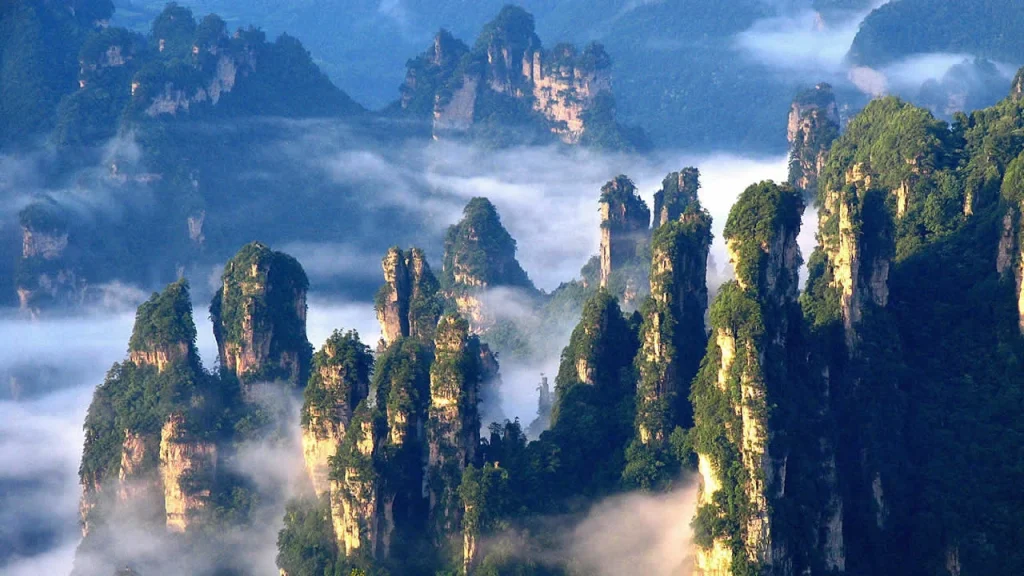
I. A Brief History of the City: From Remote Mountainous Wonder to Global Spotlight
Originally named “Dayong,” Zhangjiajie City adopted its current name in 1994 to reflect its tourism development, inspired by its core attraction—the “Zhangjiajie National Forest Park.” Though a young prefecture-level city, it cradles a 380-million-year geological epic: the Wulingyuan quartz-sandstone peak forest landscape, dubbed the “Earth’s Museum.”
Throughout history, Zhangjiajie has been home to ethnic minorities including the Tujia, Miao, and Bai peoples. During the Qin Dynasty’s administrative divisions, it fell under Qianzhong Commandery. Under the Ming and Qing dynasties, the chieftain system persisted for centuries, leaving behind unique Tujia stilted houses and the vibrant “Hand-Swinging Dance” culture. Yet, it was the establishment of Zhangjiajie National Forest Park in 1982 that truly propelled the city onto the world stage. This pioneering move marked China’s first national forest park and cemented the term “Zhangjiajie Landform” as a global geological terminology.
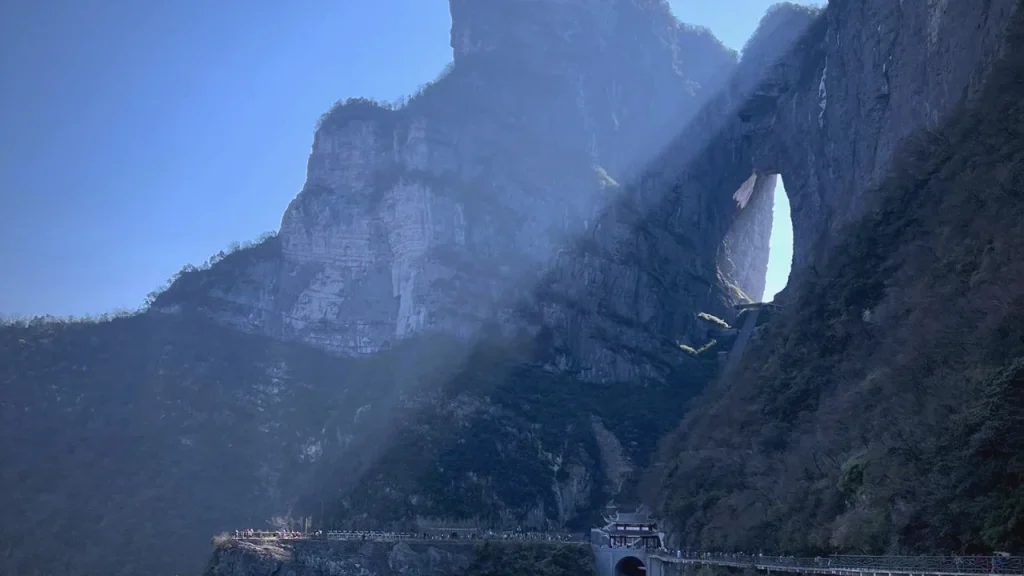
II. Geological Wonders: A Symphony of Stone, Mist, and Time
- Kingdom of Peaks: Wulingyuan’s “Thousand-Peak Pilgrimage”
Over 3,000 sandstone pillars rise abruptly from the earth, with the tallest peak soaring to 1,334 meters while the lowest plummets to just 200 meters. These stone pillars adopt myriad forms: some resemble swords piercing the heavens, others mirror a maiden combing her hair, and the legendary “Pillar of Heaven and Earth” (the inspiration for Avatar’s floating mountains) stands defiantly against the clouds. After rain, when the sky clears, the sea of clouds surges, partially concealing the peaks, creating an ethereal scene reminiscent of a celestial dwelling. - Subterranean Labyrinth: Huanglong Cave’s “Dragon Palace Feast”
This 100,000-square-meter karst cave houses wonders like the “Magic Needle Stabilizing the Sea” and the “Dragon King’s Throne.” Among them, a 19.2-meter-tall stalagmite named the “Magic Needle”—insured for 100 million yuan—stands as nature’s “priceless treasure.” - Heaven’s Gate Ajar: The Legend of the Sky-Piercing Road
Tianmen Mountain’s main peak reaches 1,518 meters above sea level, connected by a 1,518-meter-long mountainous road with 99 hairpin turns, dubbed “China’s King of Extreme Mountain Bends.” At its summit, the natural mountain-piercing karst cave — Tianmen Cave — stands 131.5 meters tall and 57 meters wide, resembling a colossal gate between heaven and earth. Each year, it lures countless wingsuit flyers to test their limits against the abyss.
III. Climate Code: A Fairyland for All Seasons
Zhangjiajie enjoys a mid-subtropical mountainous monsoon climate, with an annual average temperature of 16.8°C. Its four distinct seasons offer comfort without extreme cold or heat:
- Spring (March–May): Veiled in mist, the mountains burst into bloom, painting a paradise for photographers.
- Summer (June–August): With average temperatures around 28°C, it’s the perfect time to wade in the cool waters of Golden Whip Stream and escape the summer heat.
- Autumn (September–November): The hillsides blaze with color as the Tianzi Mountain cable car glides through a tapestry of crimson foliage.
- Winter (December–February): Snow-clad peaks gleam like jade sculptures, while Tianmen Mountain’s rime ice formations create a winter wonderland unlike any other.
IV. Must-Do Guide: Become an “Avatar” in This Fairyland
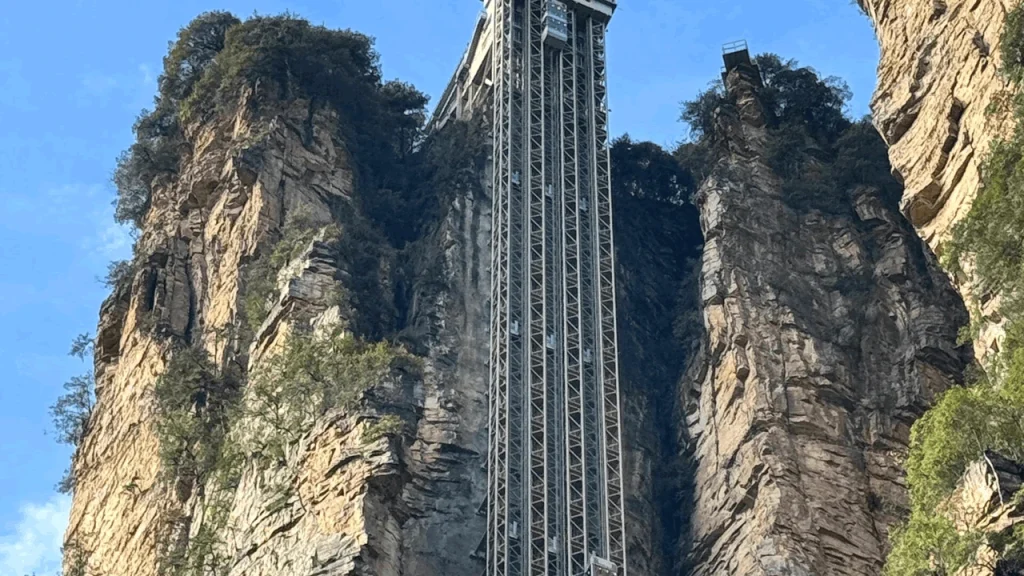
1. Zhangjiajie National Forest Park: The Heart of the Wonder
Essential Experiences:
- Yuanjiajie: Ride the “World’s Tallest Outdoor Elevator”—Bailong Elevator—as it pierces through 335 meters of cliffs in just 1 minute and 58 seconds, delivering you to the “Pillar of Heaven and Earth,” the real-life inspiration for the Avatar’s floating mountains.
- Golden Whip Stream: Trek the 7.5-kilometer gorge, where playful macaques swing through trees and the river’s murmur provides a soothing soundtrack.
- Ten-Mile Gallery: Board a mini-train winding through rock formations shaped like an “Old Herbalist” and the “Three Sisters Peaks,” as if gliding through a living Chinese landscape scroll.
Hidden Gems:
- Dawn at Huangshizhai: Rise early to witness the “Buddha’s Light spectacle”—a halo of golden hues around your shadow—as the sun ignites the cloud sea.
- Mountaintop Slumber: Spend a night in a cliff-side guesthouse, where the Milky Way sprawls above you like a celestial quilt.
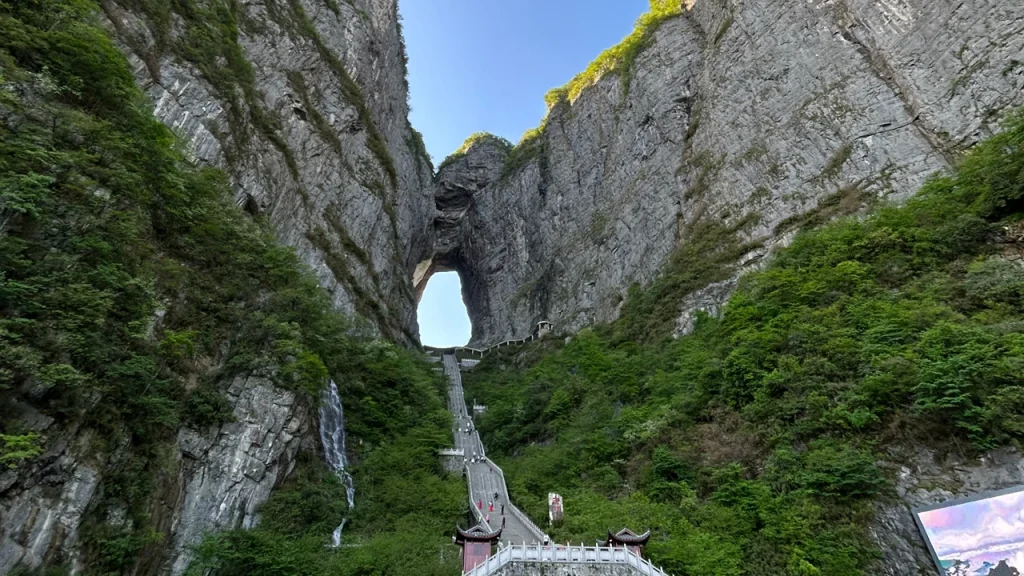
2. Tianmen Mountain National Forest Park: Heart-Pounding Thrills Above the Clouds
Essential Experiences:
- Tianmen Mountain Cable Car: Stretching 7,455 meters with a vertical rise of 1,279 meters and a jaw-dropping 38-degree incline, this engineering marvel earns its nickname as the “aerial sightseeing bus.”
- Glass Skywalk: Perched 1,430 meters above a cliff with a transparent floor, this path dares you to conquer “each step sends shivers down your spine” views.
- 999 Heavenly Steps to Tianmen Cave: Hike or ride the mountain-piercing escalator to witness the awe-inspiring spectacle of “Heaven’s Gate Ajar.”
Hidden Gems:
- Join the “Tianmen Mountain Wingsuit Flying World Championship” for an adrenaline rush like no other, or visit in winter to marvel at the “Heaven’s Gate Spouting Mist”—a surreal phenomenon where clouds billow from the cave like dragon’s breath.
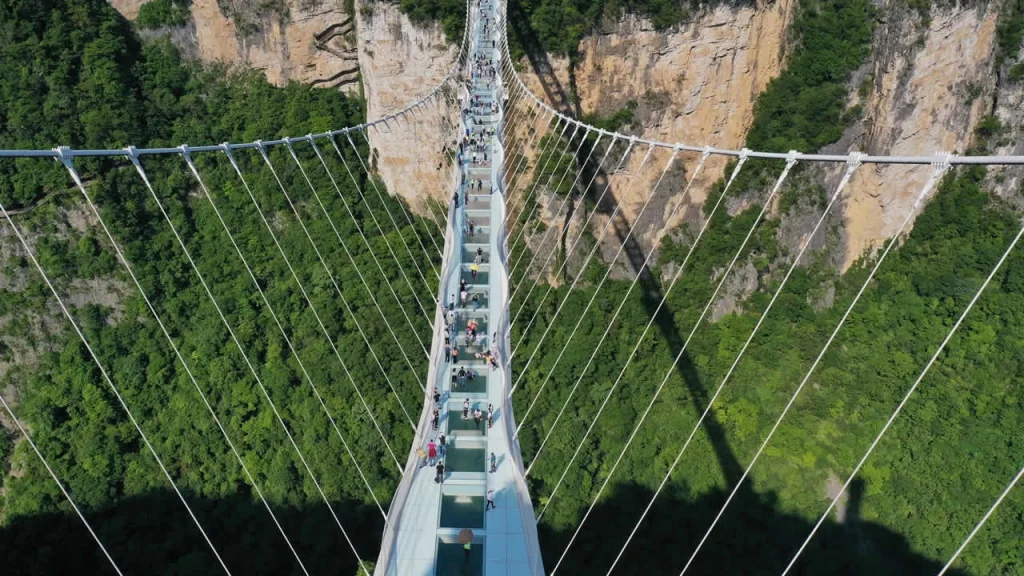
3. Zhangjiajie Grand Canyon Glass Bridge: A Stroll Above the Clouds
This bridge—the world’s highest and longest glass-bottomed span—stretches 430 meters across the canyon, suspended 300 meters above the valley floor. Walking upon its transparent surface, you’ll feel the vertigo-inducing drop beneath your feet, while the air fills with a symphony of screams and laughter.
Hidden Gems:
- Test your courage with extreme sports like “zip-lining” or “bungee jumping,” or visit at dusk to capture the bridge bathed in golden-hour light, framing the perfect shot against the setting sun.
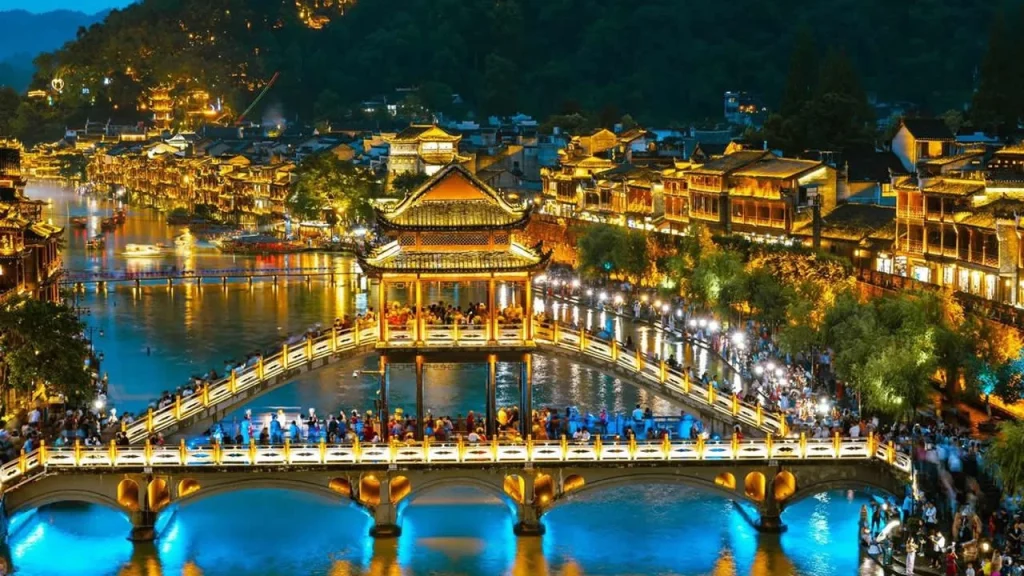
4. Fenghuang Ancient City (Nearby Gem): A Millennial Nocturne by the Tuojiang River
Though part of Xiangxi Prefecture, this gem lies just a 2-hour drive from Zhangjiajie. Immortalized as Shen Congwen’s Border Town, it comes alive at dusk: stilted houses cast their reflections on the Tuojiang River, silver ornaments worn by Miao maidens glint under moonlight, and the melody of Tales of the Small Town drifts from riverside bars—a timeless ballad frozen in stone and water.
V. A Taste of Zhangjiajie: Tujia Flavors from Mountain and Wild
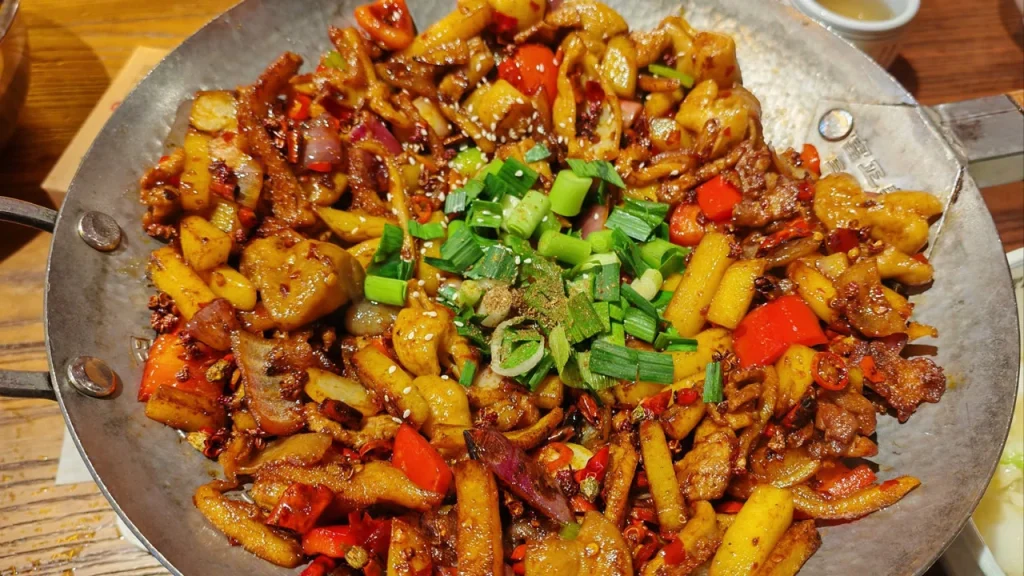
- Sanxia Guo (Three-Served Stew): The Tujia People’s Hotpot Philosophy
This iconic dish marries smoked bacon, tofu, and radish in a simmering pot, then stir-fried with chili and Sichuan pepper for a fiery kick. Dubbed the “ancestor of dry pots,” the Fu Zhengyi Sanxia Guo restaurant serves a version where the spices deepen with every simmer—a symphony of heat and umami.
Foodie Tip: Pair it with a bowl of kudzu root starch to temper the spice and nourish the soul. - Tujia Smoked Bacon: A Taste of Time
Crafted from local black pigs and smoked for months using pinewood and orange peels, this bacon boasts a firm texture—fatty yet unctuous. The Wulong Shanzhai restaurant’s smoked meat platter, paired with glutinous rice cakes (ciba), is a carnivore’s dream. - Kudzu Root Starch: The “White Gold” of the Wuling Mountains
Ground from wild kudzu roots, this glistening, translucent starch dissolves effortlessly on the tongue. Sweetened with honey or brown sugar, it’s a refreshing antidote to summer heat or rich meals. - Blood Tofu: Tujia’s “Unconventional Delight”
A fusion of tofu and pig’s blood, smoked to perfection. Though it looks bold, this chewy, salty-savory treat is a match made in heaven for baijiu (Chinese liquor). - Kiwi Juice: Wulingyuan’s Sweet Gift
Zhangjiajie is one of China’s kiwifruit birthplaces. Freshly squeezed juice offers a tangy-sweet escape, while the Zhangjiajie Wine brand’s low-alcohol kiwi wine preserves the fruit’s vibrancy in every sip.
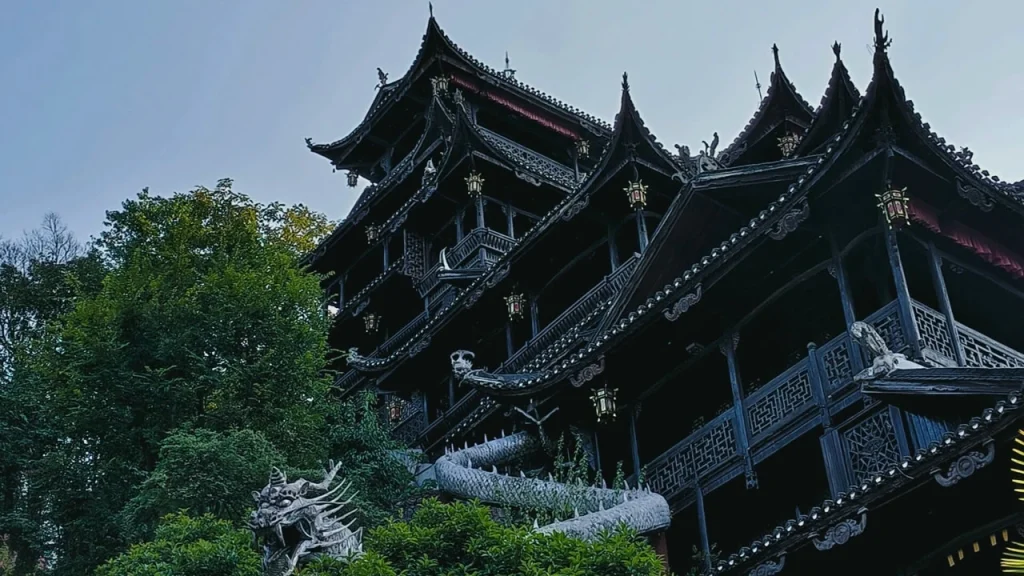
VI. Pre-Trip Essentials: Practical Tips for Your Zhangjiajie Adventure
Transportation:
- Air: Zhangjiajie Hehua Airport offers direct flights to Beijing, Shanghai, and other major cities.
- High-Speed Rail: The Zhangjiajie West Railway Station connects to regional hubs.
- Shuttles: Tourist shuttle buses link downtown Zhangjiajie to attractions.
Tickets:
- Forest Park: 4-day pass for 228 CNY.
- Tianmen Mountain: 278 CNY (includes cable car).
- Grand Canyon: 128 CNY (includes Glass Bridge access).
Accommodation:
- Wulingyuan: Opt for homestays along Xibu Street for immersive local charm.
- Tianmen Mountain: Choose inns at the foot of the peak for sunrise vistas.
Gear Essentials:
- Footwear: Non-slip hiking boots for rocky trails.
- Rain Gear: Pack a poncho—mountain weather shifts dramatically.
- Sun Protection: Sunscreen and a hat are musts, even on cloudy days.
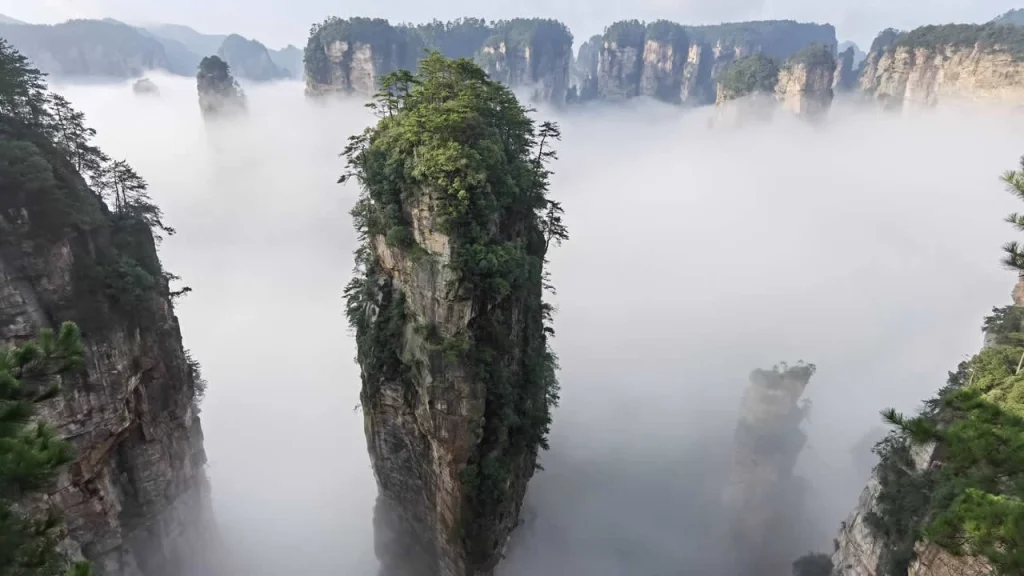
Epilogue: Zhangjiajie—Where Landscape and Culture Converge
Zhangjiajie’s beauty lies in the ephemeral peaks of Yuanjiajie, shrouded in mist; in the thrill of piercing the heavens aboard the Tianmen Mountain Cable Car; in the smoky aroma of Tujia bacon simmering beside a hearth. Here, nature’s geological masterpieces intertwine with the timeless traditions of the Tujia people. Standing on the Glass Bridge, gazing into the abyss, or listening to a folk ballad in a stilted house, you’ll suddenly realize: Zhangjiajie isn’t an escape from the world, but a return to the soul’s true home—a place where earth and spirit sing in harmony. Pack your bags—the mountains and rivers await your arrival, as they have for millennia.

Leave a Reply